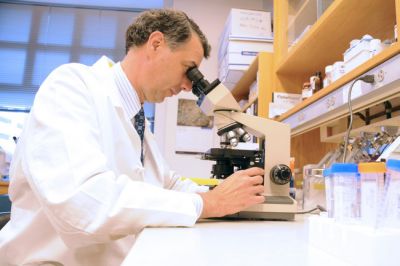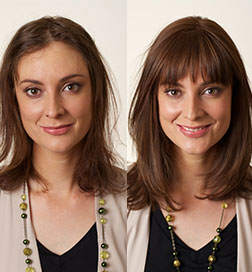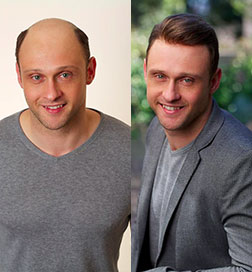
(Dr. George Cotsarelis at work. Image: NY Times).
A cure for baldness? It’s the dream of many a young man and thousands of women in Australia experiencing hair loss. That dream may eventually become a reality through continuing research by a doctor who has spent several decades learning the treacherous ways of the follicle may have discovered a new way to put the brakes on the process. This short article is an excerpt from the NY times.
Dr. George Cotsarelis, a professor and head of dermatology at the Perelman School of Medicine of the University of Pennsylvania, and colleagues have identified a moleculethat inhibits hair growth in the follicle. The research team also pinpointed the receptor on the cell where the deed is done, making it a target for possible future therapies for male pattern baldness.
Treatments focusing on this specific receptor are already in the pipeline, developed by pharmaceutical companies to treat illnesses related to allergies, said Dr. Luis Garza, lead author of the paper announcing the discovery, which appeared in Science Translational Medicine.
“The receptor is already a target for other diseases,’ he said. “The exciting aspect is that we can try to use those drugs now being developed to treat male pattern baldness.’ About 10 drugs that take aim at the receptor are going through clinical trials to treat allergic diseases, he said.
Desmond J. Tobin, a professor of cell biology and director of the Center for Skin Sciences at the University of Bradford in England, said he welcomed the discovery.
“We are definitely in need of a new way to tackle this problem,’ Dr.Tobin said.
Male pattern baldness is the most common form of hair loss in men. Current treatments include hair transplants, Sensigraft, Reallusions for women, Laser light therapy and two medications approved by the Food and Drug Administration — one a lotion containing minoxidil, the second a pill containing finasteride.
The discovery isn’t likely to help men who are already bald. “It would be too much to turn the clock back and reverse very extensive hair loss,’ Dr. Tobin said. For people with extensive hair loss they should consider solutions such as Sensigraft (for men and women) and Reallusions for women.
But should a treatment based on the discovery come to pass, it could be significant for men who are in the early stages of balding. “You could probably slow the hairs from getting so fine and thin in the first place,’ he said. “That would be a breakthrough.’
The miniaturized hairs of balding men remain on the scalp for a few days to a few weeks, Dr. Tobin said. In contrast, normal scalp hairs typically remain for at least three years. “If you could release the hairs to grow more normally in the scalp, you’d let the hair follicles go on for a bit longer,’ he said. “They would produce visible, cosmetically attractive hair.’ (Very exciting news! ~ Ed.)
Dr. Cheng Ming Chuong, a professor of pathology at the Keck School of Medicine at the University of Southern California, also was enthusiastic about the discovery. “We in the field are excited to see new progress,’ he said. “Once you know the molecules that do the work, scientists can design different compounds to deal with the problem.’
Dr. Cotsarelis, who describes himself as “enamored with the hair follicle,’ has been hard at work on balding scalps since he identified hair follicle stem cells in mice in 1990, when he was a postdoctoral fellow. “We were able to show that when we isolated the cells and injected them into another mouse,’ he said, “the mouse made new hair follicles.’
In the most recent work, he and his team studied the balding and nonbalding areas of men’s scalps. They did detailed genetic analysis of the cells, pinpointing the molecule, Prostaglandin D2, that was found at higher levels in the bald scalps of men. Dr. Cotsarelis and Dr. Garza are co-inventors on a patent owned by the University of Pennsylvania describing the pathway by which the prostaglandin is inhibited at the receptor.
ALSO at work on the problem of male pattern baldness is Valerie Horsley, an assistant professor of molecular, cellular and developmental biology at Yale. She is investigating how fat cells in the skin of mice send signals to hair follicles.
“Our work shows that fat cells can induce hair growth in mice,’ she said. She is now at work on the molecular mechanism by which these cells act.
Dr. Cotsarelis, meanwhile, is working on another vexing problem. “Now we need to look at women who are losing their hair,’ he said.
Related: Cancer Drug could Cure Baldness
For more information on options available to overcome hair loss, call us today on 1300 427 778.
Transitions Hair loss Clinics
Sydney Hair Loss Clinic – Ph: 02-9212 4950




